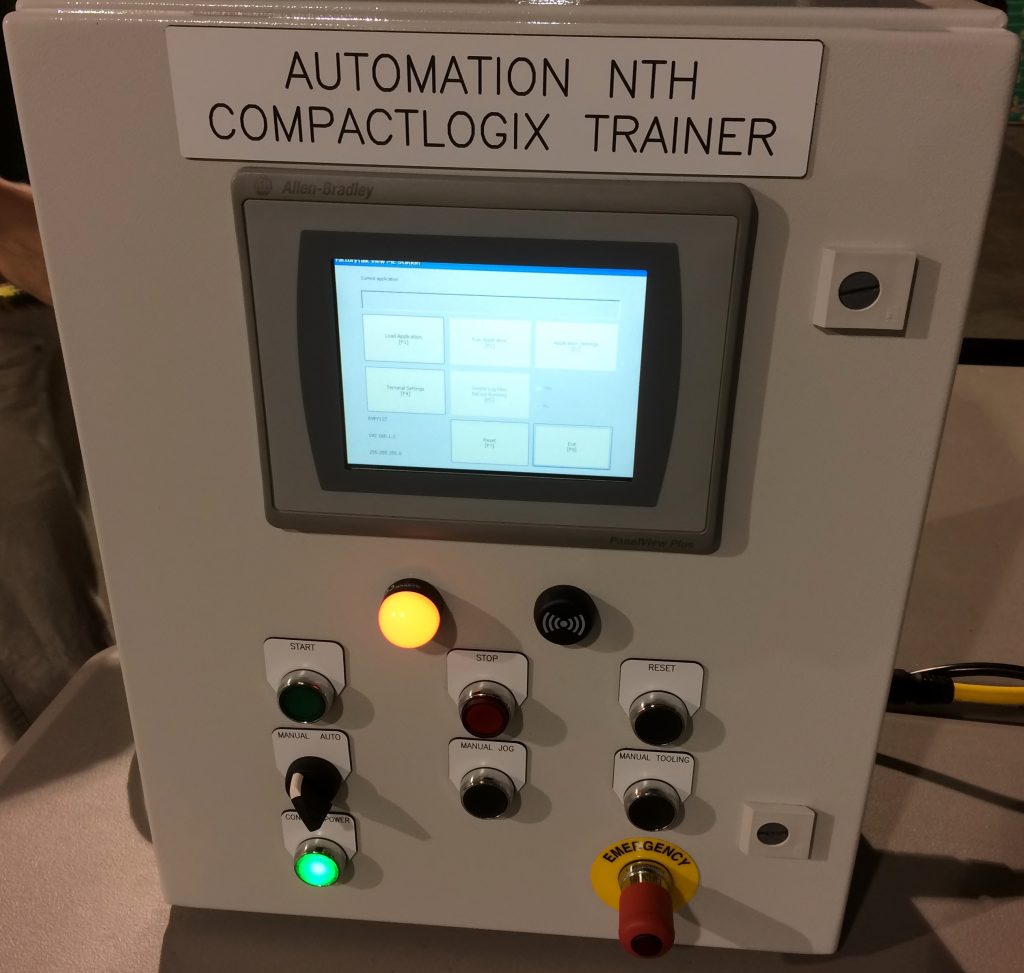Advanced PLC Training using Industrial Equipment
I just got back from teaching a class in California using the conveyor and training demo mentioned in my previous post on Automation NTH. I have discussed training quite a bit on this blog before, but I feel like this concept deserves special attention.

The class lasted a week and I had three students, all experienced engineers with little or no previous PLC experience. As those of you who follow this blog know, I regularly teach PLC and HMI classes for Automation Training. There are beginning and advanced classes in Allen-Bradley, Siemens PLCs and HMIs, as well as WonderWare, Industrial Communications, and other classes. When marketing classes to a broad variety of students from different backgrounds, it is necessary to standardize the training so that it applies to the widest range of companies and students.
For this class I had to create custom material specific to the customer. I have taught two similar classes using these demos previously for NTH, so some of the material has already been developed, but this is the first time we have tried it at a customer’s location. Since the goal was to create a self-guided course using this equipment it warranted the trip.
So what is the biggest difference between this and a standard PLC training class using pushbuttons and pilot lights? One of the biggest takeaways was just how complex the training could be with real hardware.. For instance, one of the first exercises I assigned was putting the system into Auto and Manual Modes along with the conditions described in my previous post on the System Routine. This is an ideal exercise for bit logic and I/O access since as you can see in the picture there is an HMI with Auto and Manual buttons as well as a selector switch, E-Stop, Power button and indicators reflecting a stack light. This provides a lot of material for discussion of system control and operation. It also segues well into the use of timers for blinking lights and pulsing a buzzer.
After doing several exercises familiarizing students with editing and basic instructions, the class got advanced pretty quickly. I had students create a system UDT and use it for control of their own program, then introduced them to a pre-written program with multiple subroutines, Add-On Instructions(AOIs), an auto sequence and all of the different program sections I have described in the PLC tab and series on this blog. After operating the conveyor demo and seeing how the system operated, I had them go through a series of operations repairing a copy of the program where I had removed rungs from each routine. After that I had them write their own auto sequence to simulate interfacing with an inspection system. We then did one full day on using the HMI software, Allen-Bradley’s FactoryTalk View ME.
Overall the class went well, but we covered a LOT of material in a very short period of time. While this may work for companies who are keeping the equipment for a while, it wouldn’t be very practical for a regional class like I do for Automation Training. The shipping and handling of the equipment alone wouldn’t warrant it. At the same time it was pretty awesome to be able to cover advanced topics like program structure, templates and sequences/state machines.
If you are interested in advanced training like this from NTH or standard PLC training through Automation Training, I would encourage you to contact either of them or hit me up if you have any questions. Of course I also teach my own custom classes in Lebanon, Tennessee, near Nashville.

